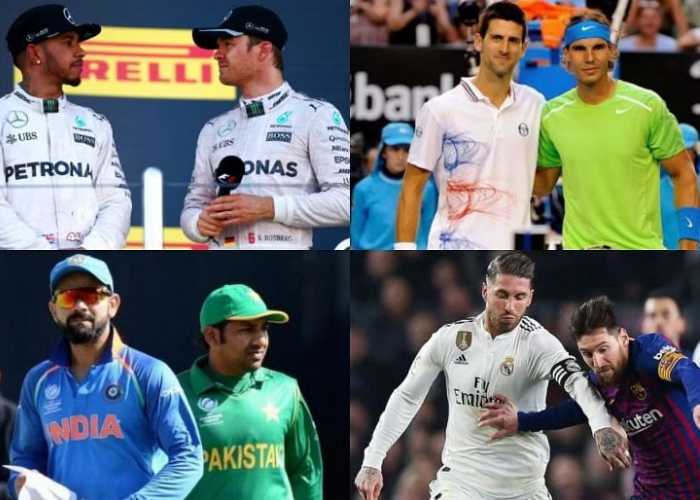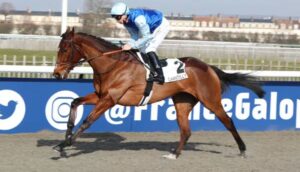
Sports have always been a canvas for human passion, determination, and skill. While the thrill of competition itself is exhilarating, there’s something uniquely captivating about witnessing intense rivalries unfold on the field. Throughout history, sports have given birth to some of the most epic showdowns, where individuals, teams, and nations collide in a symphony of sweat and strategy. These rivalries transcend mere games, becoming part of cultural narratives and shared human experiences. In this article, we delve into the annals of history to explore some of sports’ greatest showdowns that have etched their names into the tapestry of time.
The Ali-Frazier Frenzy
The rivalry between Muhammad Ali and Joe Frazier in the world of boxing is a tale of two iconic heavyweights who clashed not only in the ring but also in the realm of culture and society. Their trilogy of fights, aptly dubbed the “Fight of the Century,” “Super Fight,” and “Thrilla in Manila,” captured the imagination of the world during the 1970s.
The first bout took place on March 8, 1971, at Madison Square Garden, New York City. It was a clash of styles: Ali, the brash, quick-witted showman, versus Frazier, the relentless, unyielding warrior. Frazier managed to land several brutal blows on Ali, eventually securing victory via unanimous decision after 15 grueling rounds. This marked Ali’s first professional loss and laid the foundation for one of sports’ most intense rivalries.
Their second bout, the “Super Fight,” took place on January 28, 1974, in New York. Ali emerged victorious this time, but the rivalry’s crescendo came with the third and final fight, the “Thrilla in Manila,” on October 1, 1975. The fight was brutal, with both men pushing their physical limits. Ali famously said it was the closest thing to death he had experienced. Ultimately, Ali won when Frazier’s corner stopped the fight after the 14th round.
The Ali-Frazier rivalry transcended boxing and became a symbol of the era’s societal and political divisions. Ali, a vocal anti-war activist, and Frazier, who felt Ali’s actions belittled his own sacrifices as a patriotic soldier, represented different viewpoints on the Vietnam War. This rivalry encapsulated the complex interplay between sports and broader cultural conversations.
The Magic-Bird Connection
The 1980s witnessed a rivalry that not only rejuvenated the National Basketball Association (NBA) but also defined an era and laid the foundation for the modern NBA as we know it. Magic Johnson of the Los Angeles Lakers and Larry Bird of the Boston Celtics were basketball prodigies who faced off multiple times in the NBA Finals, creating a rivalry that transcended competition and united fans across the nation.
Bird and Magic’s paths first crossed during the 1979 NCAA championship game when Bird’s Indiana State team faced off against Johnson’s Michigan State. Johnson’s team emerged victorious, and the stage was set for their NBA rivalry to flourish.
From 1980 to 1988, either the Lakers or the Celtics won the NBA championship, with Magic and Bird leading their respective teams. The Lakers-Celtics showdowns became a cultural phenomenon, with Bird’s blue-collar work ethic contrasting Magic’s flashy, smile-inducing style. Their rivalry brought basketball to a global audience and laid the foundation for the NBA’s rise to international prominence.
Beyond the court, Magic and Bird showcased how sports could bridge divides. They were friends off the court and even teamed up for the famous “Converse: Choose Your Weapon” commercials, portraying their rivalry as friendly competition. This rivalry demonstrated the power of sports to transcend differences and unite people in shared admiration for excellence.
The Federer-Nadal-N Djokovic Triangle
The world of tennis has witnessed an epic rivalry in recent years that involves not just two, but three iconic players: Roger Federer, Rafael Nadal, and Novak Djokovic. Their rivalry has defined an era of men’s tennis and led to debates about who truly deserves the title of the greatest player of all time.
Federer, known for his grace and elegance on the court, dominated tennis in the mid-2000s. Nadal, with his relentless athleticism and unmatched clay-court prowess, challenged Federer’s reign. Then came Djokovic, whose exceptional fitness and tactical brilliance disrupted the duopoly, creating a three-way rivalry for the ages.
The trio’s head-to-head matchups, particularly in Grand Slam finals, have been nothing short of legendary. The 2008 Wimbledon final between Nadal and Federer, often dubbed the “Greatest Match Ever Played,” exemplified their rivalry’s intensity. Djokovic’s emergence added another layer to the competition, creating a triangle of rivalries that kept fans on the edge of their seats.
Beyond their on-court battles, Federer, Nadal, and Djokovic have displayed mutual respect and camaraderie, even as they compete fiercely. Their rivalry has elevated men’s tennis to new heights and generated unprecedented global interest.
The El Clásico Spectacle
Soccer, the world’s most popular sport, boasts a rivalry that transcends borders and unites nations in shared passion and fervor. The rivalry between Spanish giants Real Madrid and Barcelona, often referred to as “El Clásico,” is a testament to soccer’s power to evoke intense emotions and forge cultural identities.
The rivalry is not just about the teams; it’s also a clash of cultures. Real Madrid is seen as representing Spanish royalty and tradition, while Barcelona is the embodiment of Catalonia’s identity and desire for independence. The rivalry’s intensity is fueled by historical, political, and cultural factors.
El Clásico matches are watched by millions worldwide, and the star-studded lineups, including players like Lionel Messi and Cristiano Ronaldo, have elevated the rivalry’s appeal. These matches often decide league titles and showcase the pinnacle of soccer talent.
El Clásico transcends the 90 minutes on the pitch, influencing the global perception of Spanish soccer and even contributing to broader discussions about identity, nationalism, and autonomy.
The Ashes: Cricket’s Ultimate Showdown
Cricket, a sport steeped in tradition and history, offers one of the most enduring and iconic rivalries—the Ashes series between England and Australia. Dating back to 1882, the Ashes rivalry originated when England lost to Australia on their home soil, leading a British newspaper to declare English cricket dead and its ashes sent to Australia.
The Ashes series has since become a cornerstone of international cricket, capturing the imaginations of fans from both nations. The Test matches between the two teams are a blend of skill, strategy, and sheer grit, with players competing not just for victory but for the honor of their nation.
The intensity of the Ashes rivalry is palpable, both on and off the field. The famous “Bodyline” series of the 1930s, where England’s tactics of aggressive short-pitched bowling led to controversy, highlighted the rivalry’s ferocity. Yet, despite the competition, the camaraderie and mutual respect among players remain strong.
The Ashes is more than just cricket; it’s a historical and cultural marker that unites two nations in friendly but fierce competition. The series’ significance endures, reminding us of the power of sport to forge connections and tell stories that span generations.
Conclusion
Epic rivalries in sports are more than just contests of physical prowess; they’re narratives that weave together passion, culture, and human connection. From the boxing ring to the basketball court, from the tennis court to the soccer pitch, and from the cricket ground to the world stage, these rivalries have left an indelible mark on history. They’ve united fans, sparked conversations, and demonstrated the universal power of sports to inspire, transcend, and bring people together in the pursuit of greatness. As long as there’s competition and a desire to excel, epic rivalries will continue to shape the story of sports for generations to come.





